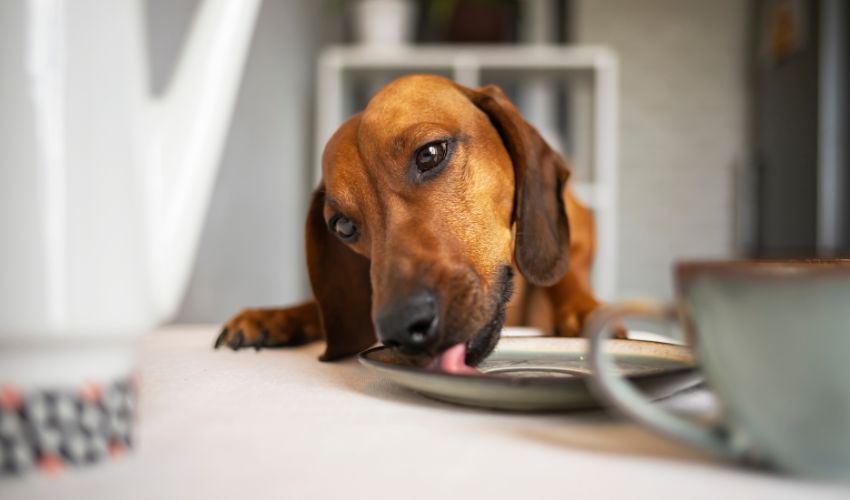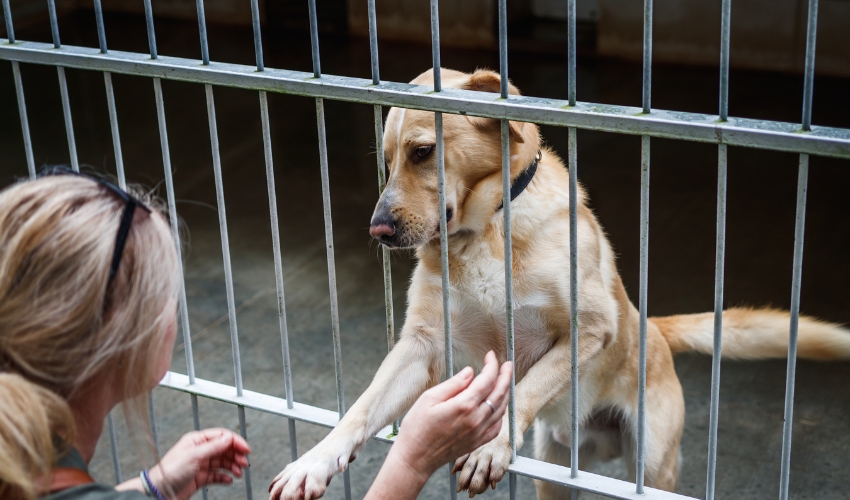Your fur baby’s eyesight is of vital importance to their overall well-being and quality of life. According to Calder Vets, A healthy dog’s eyes should be clear, bright, and free from dirt, discharge, and inflammation. Unfortunately, some certain dog breeds are more likely to have eye problems than others. Know more about the common eye problems and how to prevent them in our blog.
What are the common eye problems your fur baby can get?
Conjunctivitis (Pink Eye): Conjunctivitis is inflammation of the conjunctiva, the thin membrane that covers the inner surface of the eyelids and the whites of the eyes. It can be caused by allergies, infections, irritants, or underlying health conditions. Symptoms may include redness, discharge, swelling, and squinting.
Corneal Ulcers: Corneal ulcers are painful sores or erosions on the surface of the cornea, the clear outer layer of the eye. They can be caused by trauma, foreign objects, scratches, infections, or underlying eye conditions. Symptoms may include squinting, excessive tearing, redness, cloudiness, and sensitivity to light.
Cataracts: Cataracts are a clouding or opacity of the lens inside the eye, which can interfere with vision and eventually lead to blindness if left untreated. Cataracts can be congenital (present at birth) or develop later in life due to aging, genetics, diabetes, or other underlying health conditions. Symptoms may include cloudy or opaque eyes, changes in eye color, and vision changes.
Glaucoma: Glaucoma is a condition characterized by increased pressure within the eye, which can damage the optic nerve and lead to vision loss if left untreated. Glaucoma can be primary (inherited) or secondary to other eye conditions or diseases. Symptoms may include redness, pain, squinting, enlarged pupils, cloudy corneas, and vision changes.
Dry Eye (Keratoconjunctivitis Sicca): Dry eye is a condition characterized by inadequate tear production, leading to dryness, irritation, and inflammation of the eyes. It can be caused by autoimmune disorders, medications, congenital factors, or underlying health conditions. Symptoms may include redness, discharge, squinting, and corneal changes.
Tips on How To Take Care of Your Dog’s Eyes
Now that you’ve read some of the common eye problems your furry companion can possibly have, here are some tips on how you can take care of their eyes.
Regular Veterinary Checkups: Schedule regular veterinary checkups for your dog to monitor their eye health and detect any potential issues early on. Your veterinarian can perform thorough eye examinations and provide recommendations for proper eye care.
Keep Eyes Clean: Clean your dog’s eyes regularly to remove dirt, debris, and discharge. Use a clean, damp cloth or a mild eye-cleaning solution recommended by your veterinarian. Gently wipe around the eyes, being careful not to touch the eyeball itself.
Prevent Irritants: Protect your dog’s eyes from irritants such as dust, pollen, and chemicals. Avoid using harsh cleaning products or sprays near your dog’s eyes, and keep their environment clean and free of potential eye irritants.
Trim Fur Around Eyes: Keep the fur around your dog’s eyes trimmed to prevent it from obstructing their vision or causing irritation. Use blunt-tipped scissors to carefully trim any long hairs around the eyes, being cautious not to poke or injure your dog’s eyes.
Monitor for Signs of Eye Problems: Be vigilant for signs of eye problems in your dog, such as redness, swelling, discharge, squinting, excessive tearing, cloudiness, or changes in the appearance of the eye. If you notice any abnormal symptoms, consult your veterinarian promptly for evaluation and treatment.
Prevent Trauma: Take precautions to prevent trauma or injury to your dog’s eyes. Keep your dog away from hazardous areas where they could injure their eyes, such as construction sites, sharp objects, or rough play with other animals.
Protect from UV Exposure: Protect your dog’s eyes from harmful ultraviolet (UV) rays, especially if they have light-colored or sensitive eyes. Limit your dog’s exposure to direct sunlight during peak hours, and consider using doggy sunglasses or providing shade when outdoors for extended periods.
Maintain a Healthy Diet: Feed your dog a balanced and nutritious diet to support overall eye health. Foods rich in vitamins A, C, and E, as well as omega-3 fatty acids, can promote eye health and reduce the risk of eye problems.
Address Tear Stains: If your dog is prone to tear stains, gently clean around their eyes to remove tear buildup and prevent staining. Use a tear stain remover specifically formulated for dogs, and consult your veterinarian if tear staining persists or worsens.
Follow Veterinary Recommendations: Follow any recommendations or treatment plans prescribed by your veterinarian for your dog’s eye care. This may include medications, eye drops, or other interventions to manage or prevent eye problems.
By following these tips and being proactive about your dog’s eye care, you can help keep their eyes healthy and ensure optimal vision and comfort for your furry friend. Regular preventive care and prompt attention to any eye issues can help prevent more serious eye problems and maintain your dog’s overall well-being.












